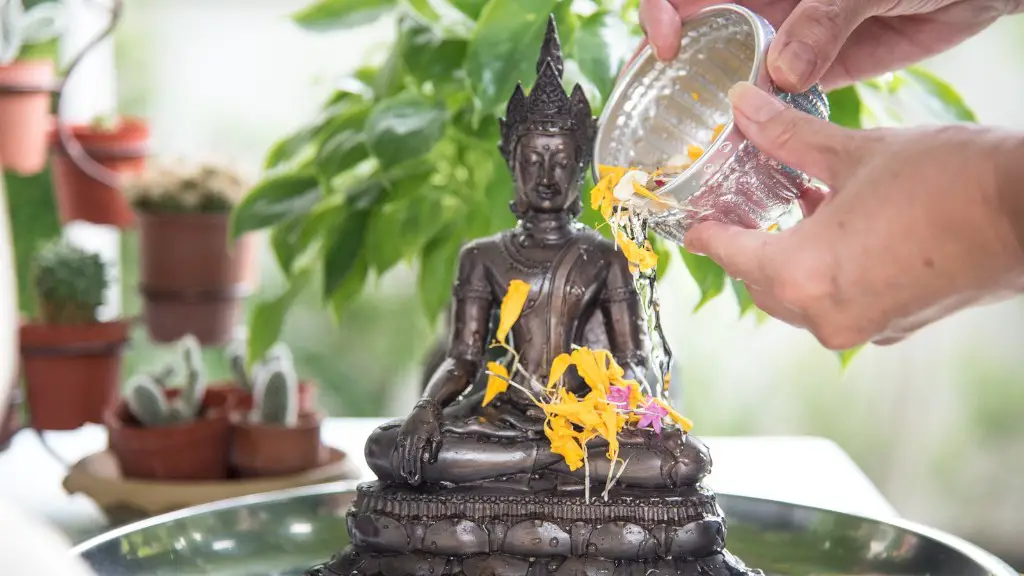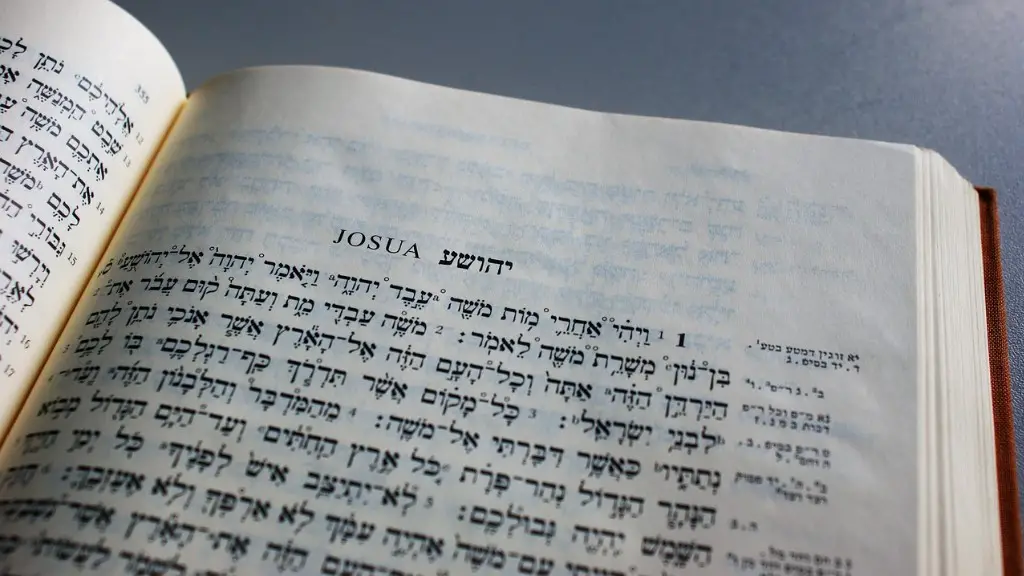Hinduism is one of the oldest known religious traditions in the world, with an estimated one billion followers today. It is based on the worship of a number of gods, known collectively as Brahman, and has a complex system of beliefs, surrounding topics such as karma, dharma, reincarnation, and meditation. So, who is Brahman?
Origins of Brahman
The origin of Brahman is a matter of debate amongst scholars. Some believe that Brahman originated as an abstraction of the human identity, while others trace its roots back to ancient animistic deities, such as Indra or Agni, or the ancient Vedic gods of the Brahmanas. Brahman was seen as being both the source of all spiritual existence, and the intelligence or laws of nature that make all of life’s events possible.
Brahman is described in the Vedas as “the creator, the sustainer and the destroyer.” The idea of Brahman as an unseen, omnipresent and all-pervading entity evolved in Hinduism over time, and is still accepted today. It is also believed to be eternal, inseparable from the universe, and existing both within and beyond our physical universe. Some believe it to be the same as the concept of God in other religions, while others consider it to be something different.
The notion of Brahman has evolved throughout Hinduism’s history, becoming more complex and multifaceted over time. In later times, Brahman came to be seen as the sole source of all reality, and the supreme deity, which is the basis for many of the rituals and beliefs in Hinduism today.
Roles of Brahman
Brahman is both an impersonal and personal deity. As a personal deity, Brahman is the source of all knowledge and truth, and is said to be the ultimate guardian of morality, justice and wisdom. As an impersonal deity, Brahman is the unifying force of the universe and of all life, and is believed to be present in all places and times. This idea is expressed in the phrase “aham brahmasmi” which translates as “I am Brahman.”
The concept of Brahman also encompasses many roles. These include the role of creator, sustainer and destroyer. As the creator, Brahman is the source of all creation, from the stars and planets to everything we can see and experience. As the sustainer, Brahman is believed to sustain the universe and all life within it, providing nourishment and support. As the destroyer, Brahman is the source of all destruction, providing the power to create and destroy.
These roles are not seen as contradictory, but rather complementary and necessary, as they each serve distinct functions and balance one another. The notion of Brahman being both the creator and the destroyer represents the idea of cyclicality and renewal, which is a fundamental belief in Hinduism. Brahman is both the cause and effect of all, and is believed to be the ultimate source of all energy.
Brahman and Soul
In Hinduism, soul, or atman, is considered to be a part of Brahman, and is said to be an eternal and inseparable part of it. This means that all souls are, in essence, connected to Brahman, and that all souls are part of the same divine essence. It is believed that when a person dies, the soul is released from its physical form, and then reunites with Brahman. This concept is referred to as “moksha”, or liberation from the cycle of death and rebirth.
The concept of Brahman as both a personal and impersonal deity is seen in how it relates to the soul. As a personal deity, Brahman is said to be the source of all knowledge and truth, and is believed to be the ultimate source of liberation for the soul. As an impersonal deity, Brahman is believed to be present in all places and times, and is seen as the unifying force of the universe. It is believed that the soul is connected to Brahman, and will eventually be reunited with Brahman when its journey through physical life comes to an end.
Worship of Brahman
The worship of Brahman is central to Hinduism, and is seen as the most important form of spiritual practice. The main method of worship is through prayer and meditation, which are believed to help connect the individual with the divine. The Upanishads say that any act of devotion is a form of “knowing” Brahman, which is the ultimate goal of achieving union with the divine.
The Bhagavad Gita, a religious text of Hinduism, teaches that the highest form of worship of Brahman is devotion, known as “bhakti.” Bhakti involves a deep sense of love and reverence for Brahman. This is reflected in the many festivals and rituals that involve the worship of Brahman through music, dance, art and prayer.
There are also other forms of worship, such as yoga, mantras, chanting and prostrations. These activities are believed to help the individual connect with Brahman in their own unique way. By recognizing Brahman in all aspects of one’s life, it is believed that the individual can come to experience union with the divine.
Influence of Brahman
The concept of Brahman has shaped Hinduism in many ways, from the most basic beliefs to the most complex philosophical and metaphysical systems. The notion of cyclicality, karma, and reincarnation all come from the Hindu understanding of Brahman. The concept of Brahman also influences India’s caste system, as it is believed that a person’s place in society is determined by their level of spiritual enlightenment.
The concept of Brahman is also important in the fields of philosophy, literature, sociology and psychology. In philosophy, Brahman is seen as the basis of reality, and many philosophical systems are based on it. In literature, Brahman is often revered as a symbol of beauty and knowledge. In sociology, Brahman is seen as the source of morality and justice, and is used to explain social and cultural roles. In psychology, Brahman is believed to be the source of consciousness and inner wisdom.
Symbols of Brahman
Brahman is represented by numerous symbols and images, which are used to express its various aspects. One of the most well-known symbols of Brahman is the Trimurti, which is a three-headed figure composed of Brahma, Vishnu, and Shiva. It symbolizes the three aspects of Brahman – creation, preservation and destruction. The Vedic symbol of the Aum is also closely associated with Brahman, and is often used in Hindu rituals and ceremonies.
The yantra is another symbol closely associated with Brahman. It is an abstract figure composed of various geometric shapes and symbols, which is used to represent the different aspects of Brahman. Additionally, the lingam is a representation of Brahman, and is seen as an embodiment of cosmic energy. Finally, Brahman can also be represented by images of deities, such as Ganesh, Kali, or Saraswati.
Mythology Surrounding Brahman
Many myths and stories have been created around Brahman, which help to explain the nature of Brahman and its relationship to the universe. One of the most popular myths is the creation myth, which tells the story of how Brahman created the universe. Other stories are focused on the role of Brahman in the lives of humanity, focusing on justice, morality and wisdom.
These stories help to explain the underlying truths of Hinduism and the concept of Brahman. They provide insight into the relationship between the individual and the divine, and how each is connected by their spiritual essence. The stories also provide a foundation for understanding the Hindu understanding of karma, reincarnation and liberation.
Views on Brahman
The views on Brahman vary among Hindus. Some believe that Brahman is the source of all life, and the ultimate reality, while others believe that Brahman is just one aspect of the universe. Some believe in a personal form of Brahman, while others prefer an impersonal one. Some view Brahman as the ultimate God, while others see it more as an energy or essence that exists within all things.
Regardless of these differing views, Brahman is seen as a fundamental part of Hinduism, and an essential part of the spiritual journey. The concept of Brahman is believed to be the source of all knowledge, truth and morality, and is believed to be the ultimate source of liberation. It is this belief that has shaped Hinduism over centuries, and which continues to drive its spiritual practices today.

